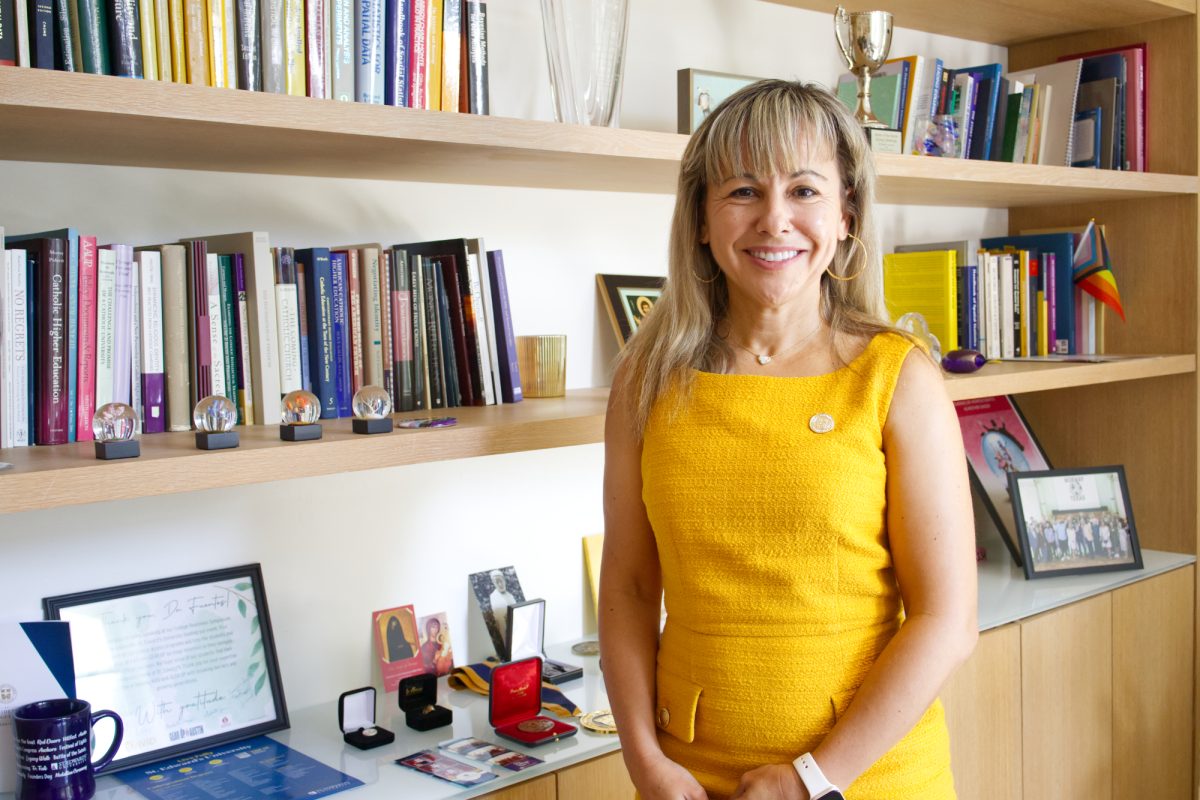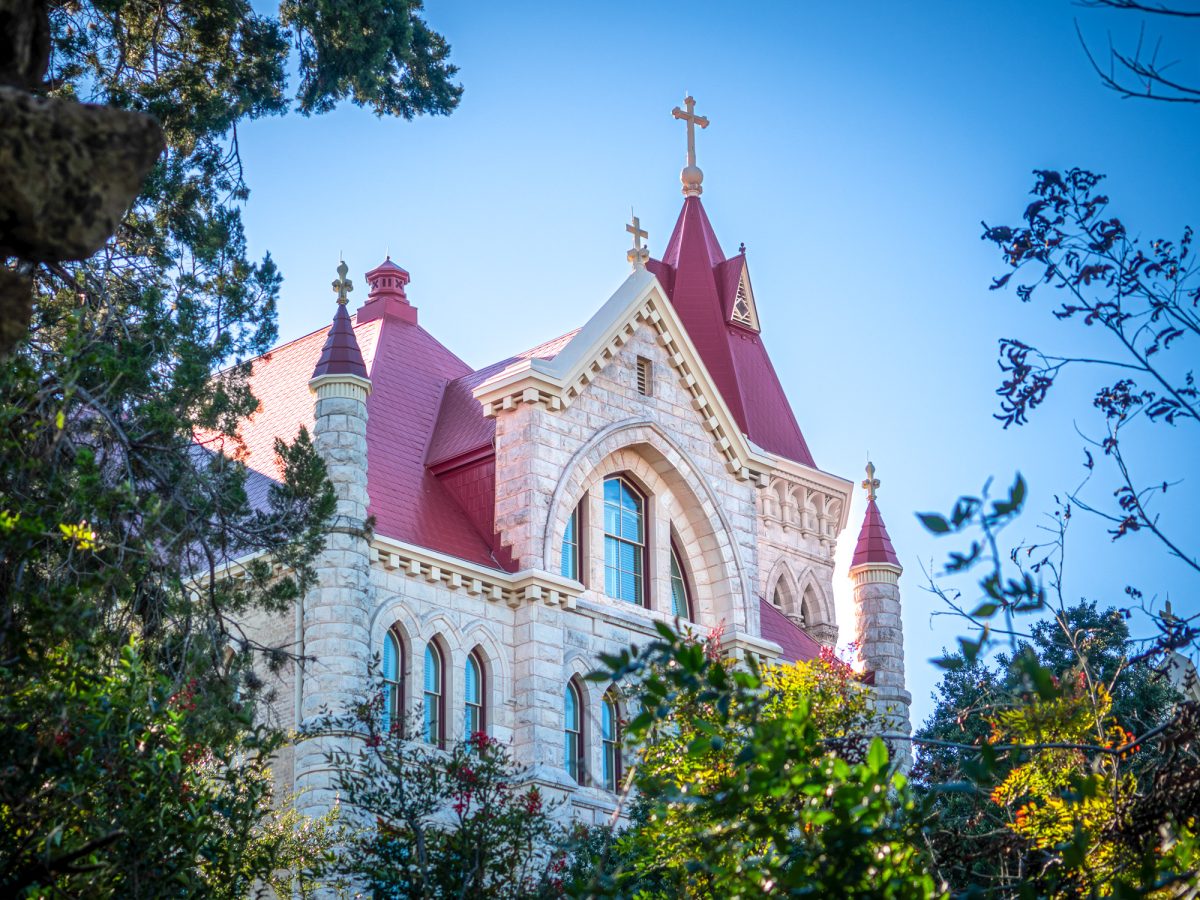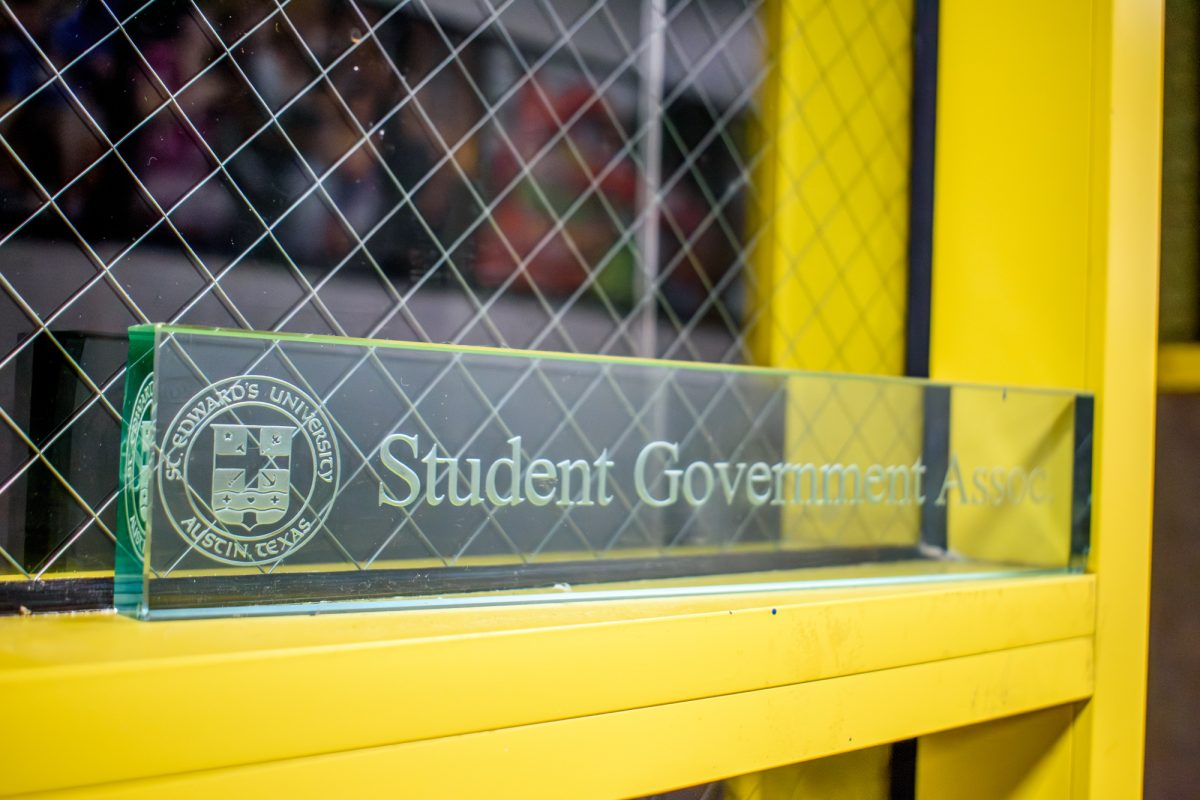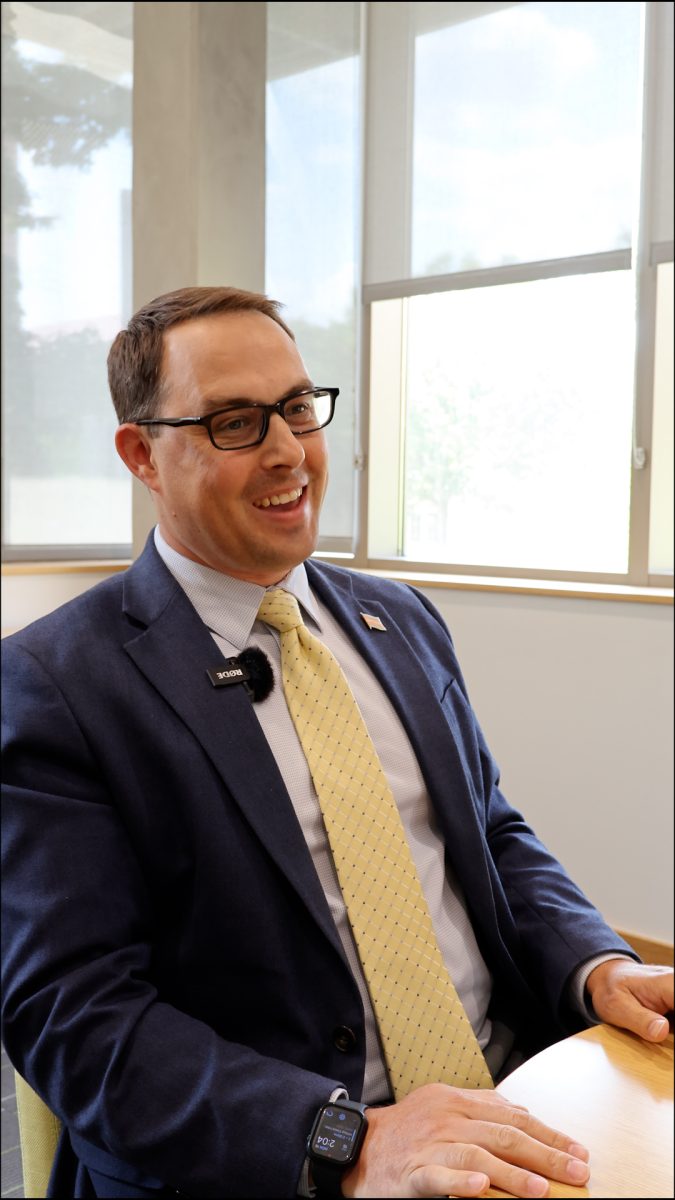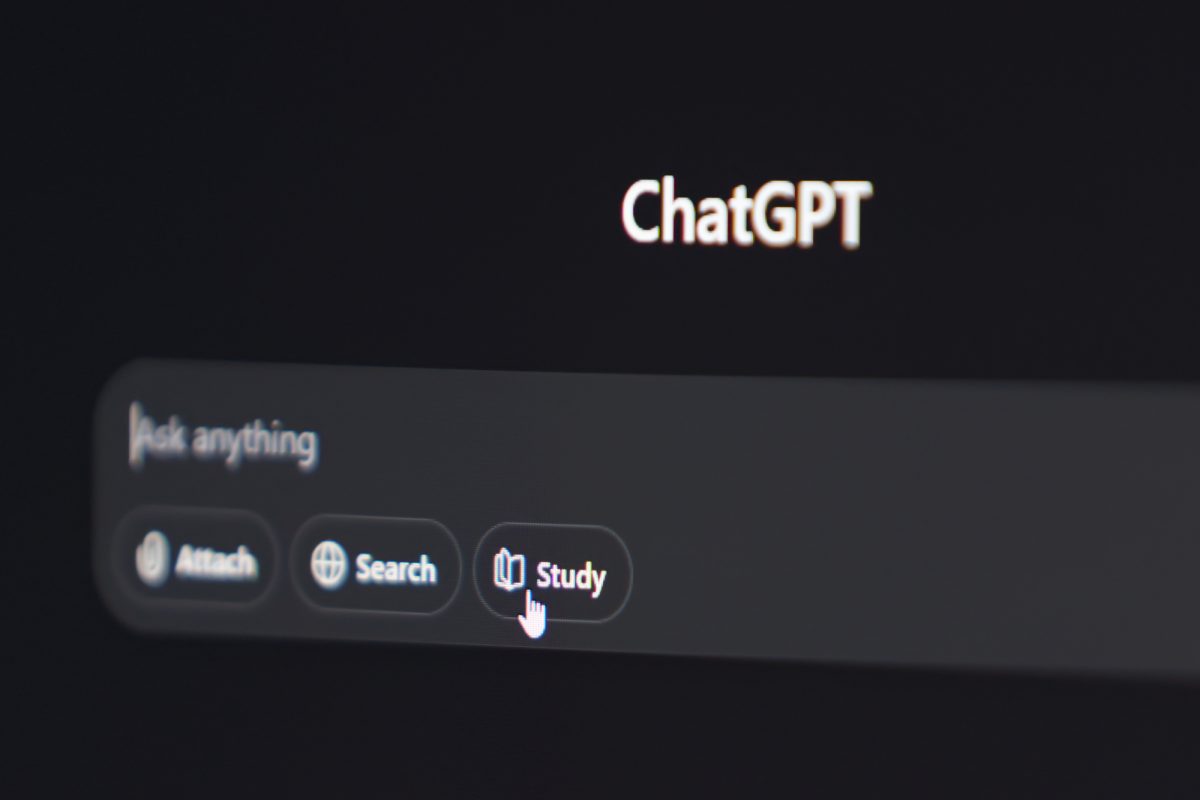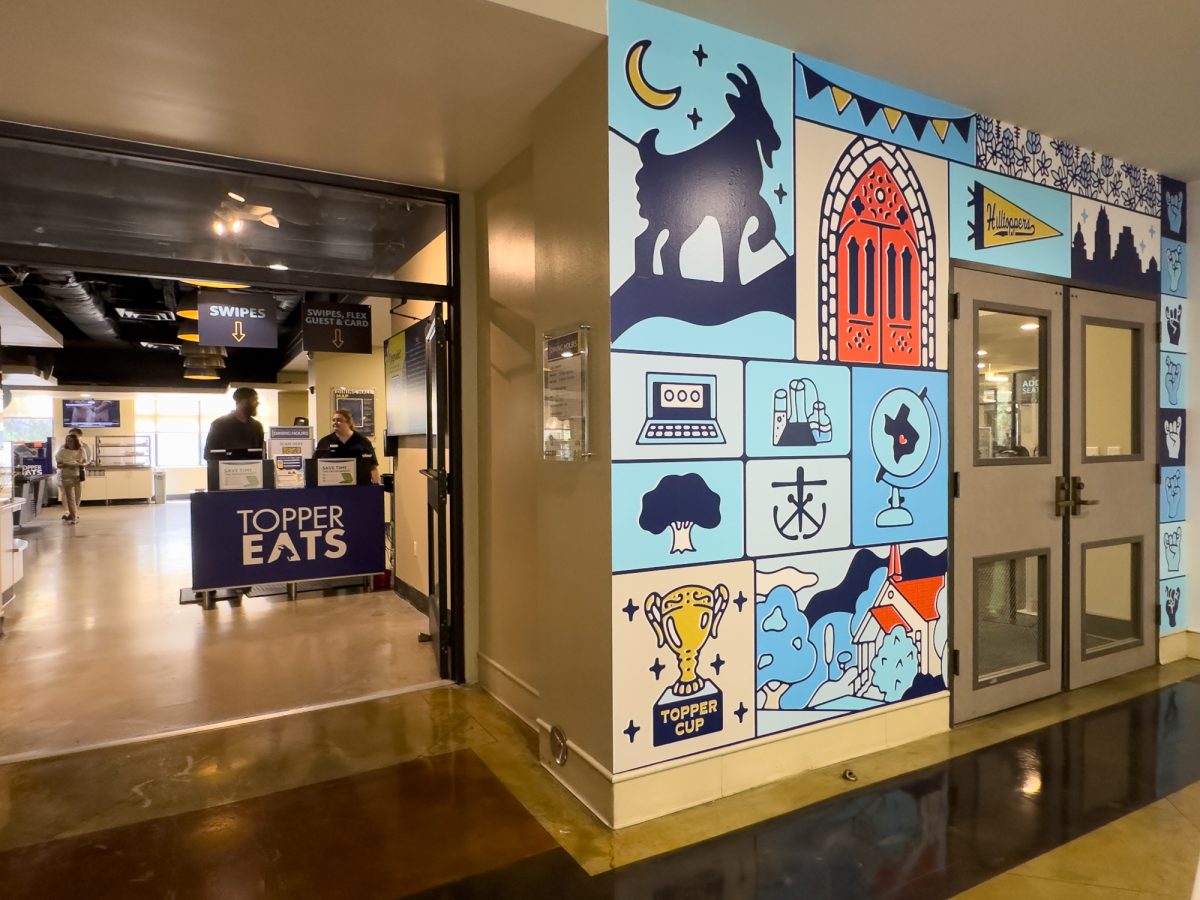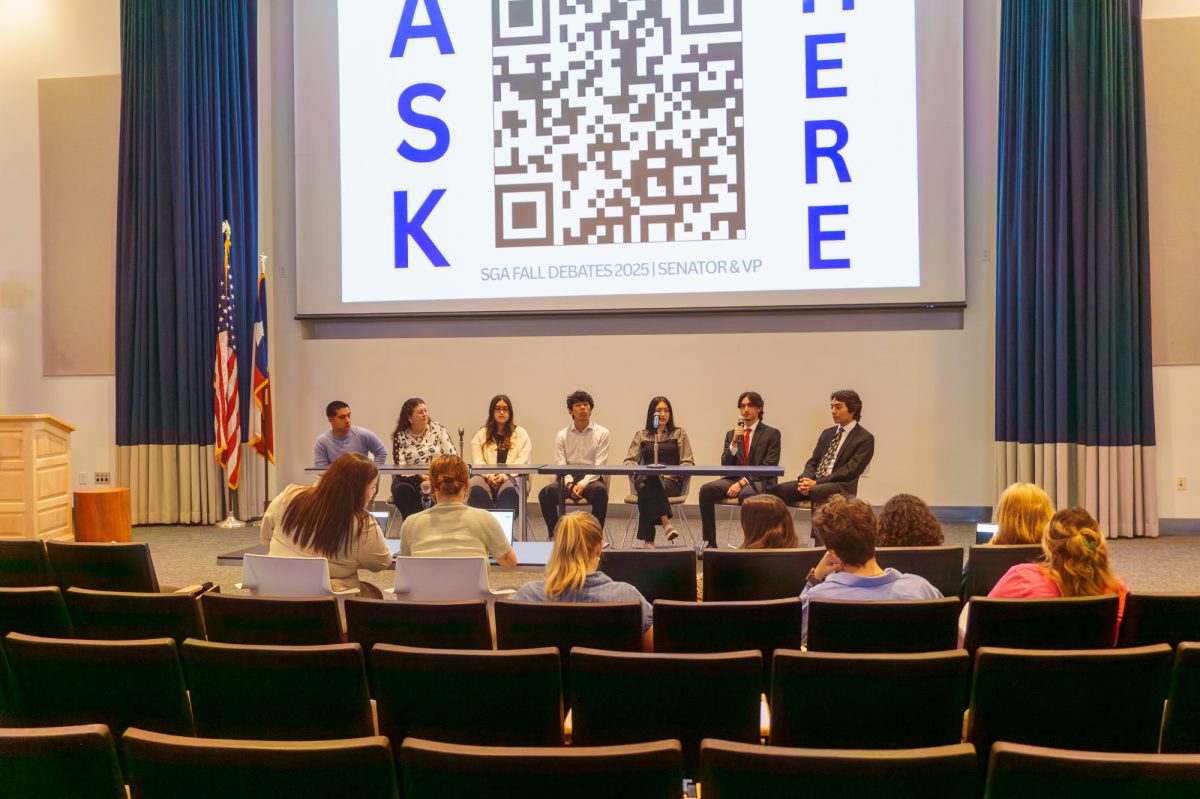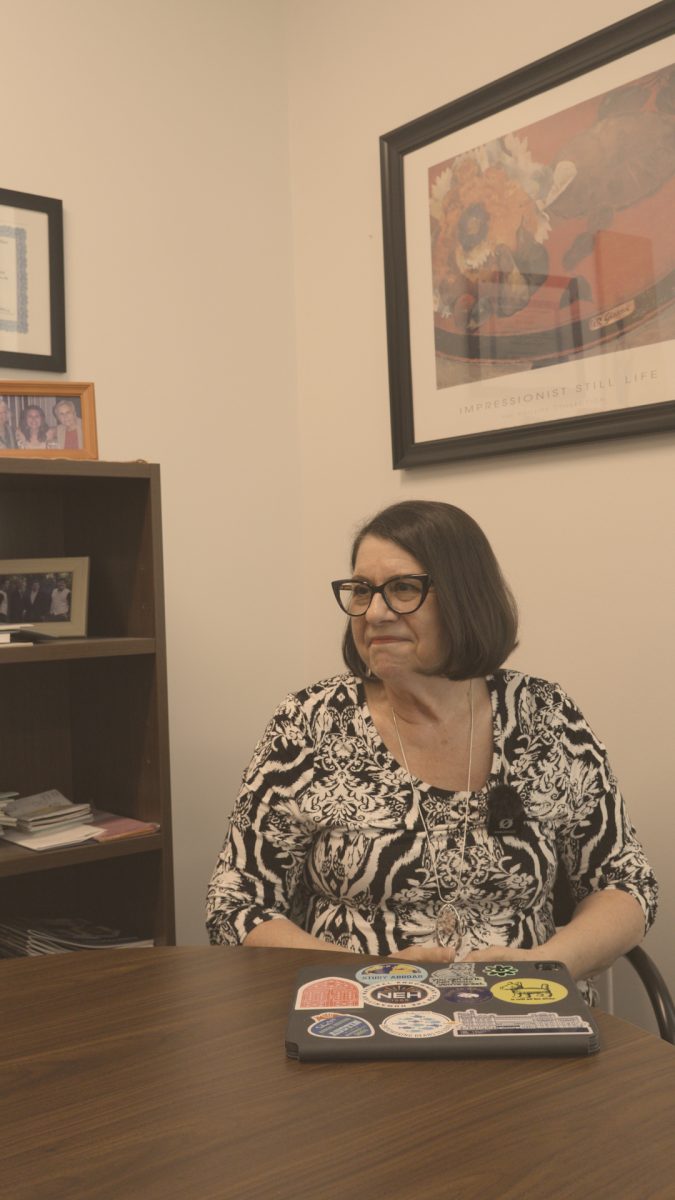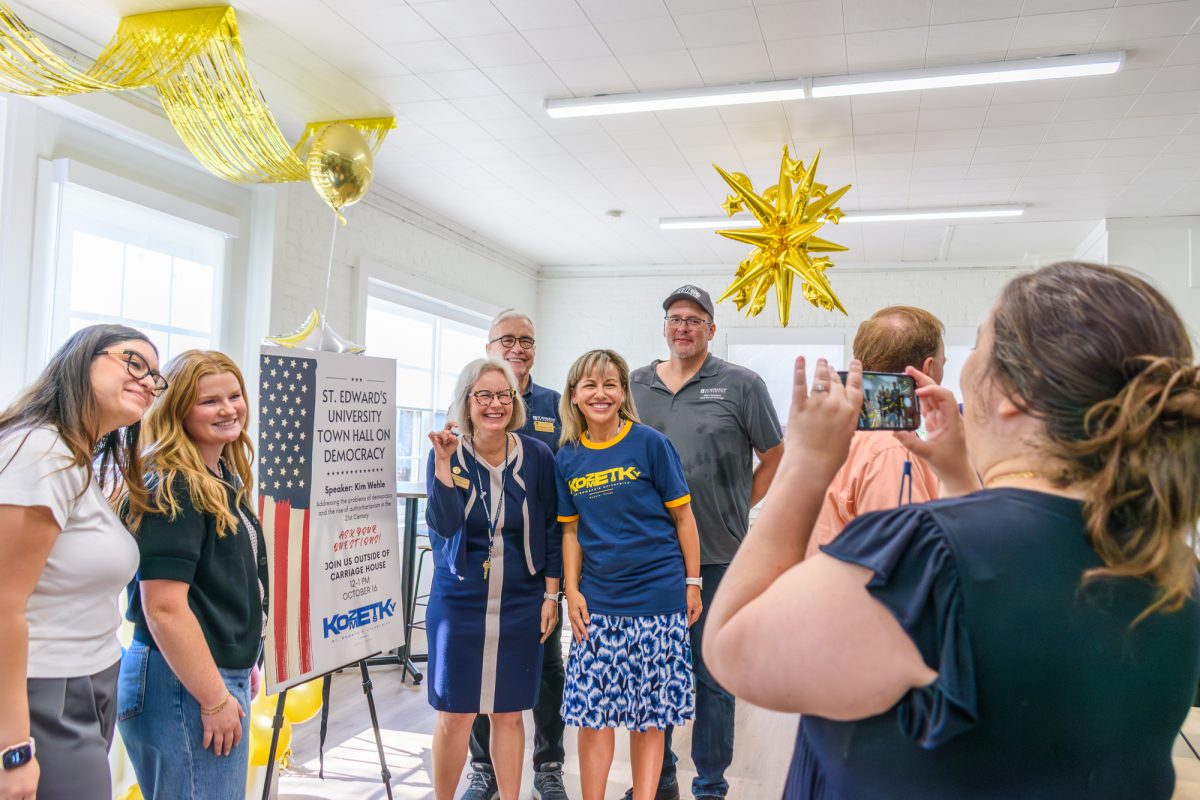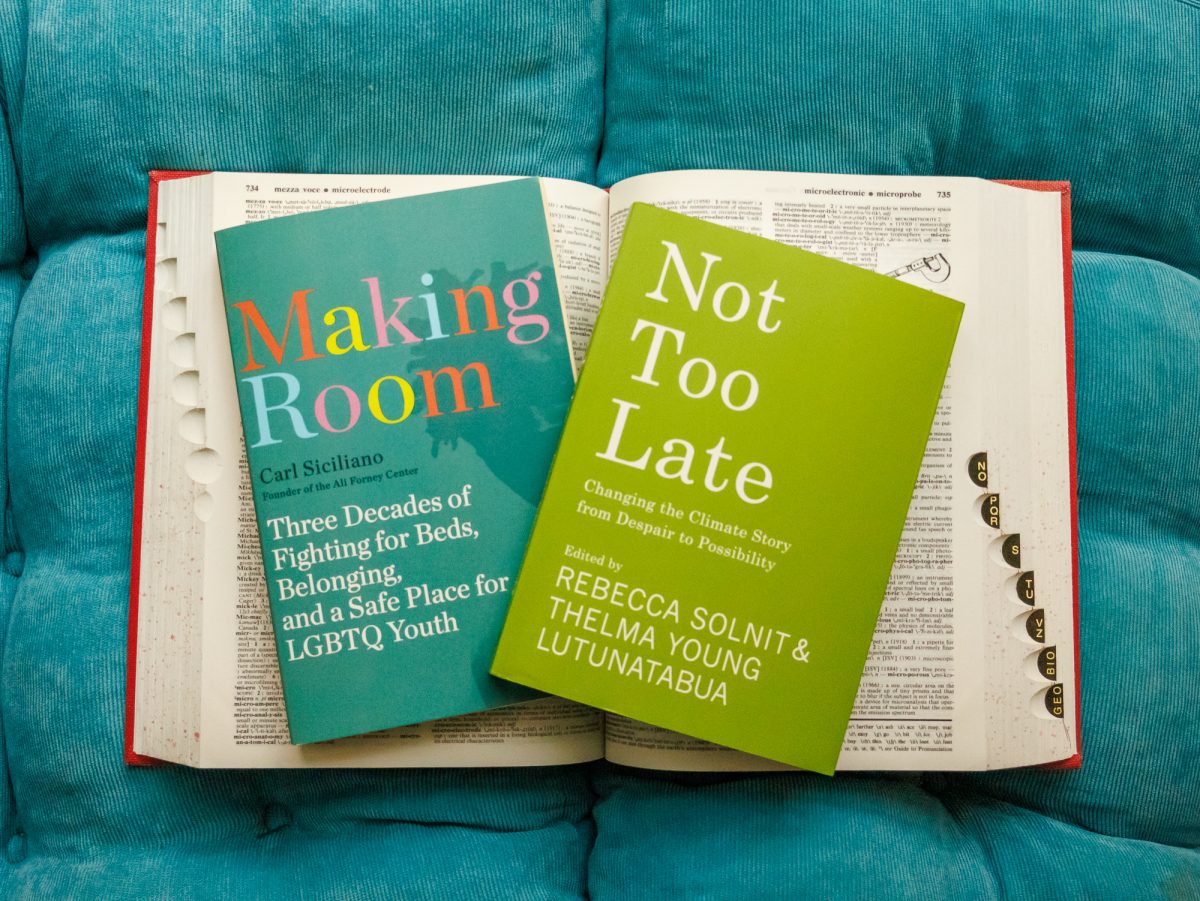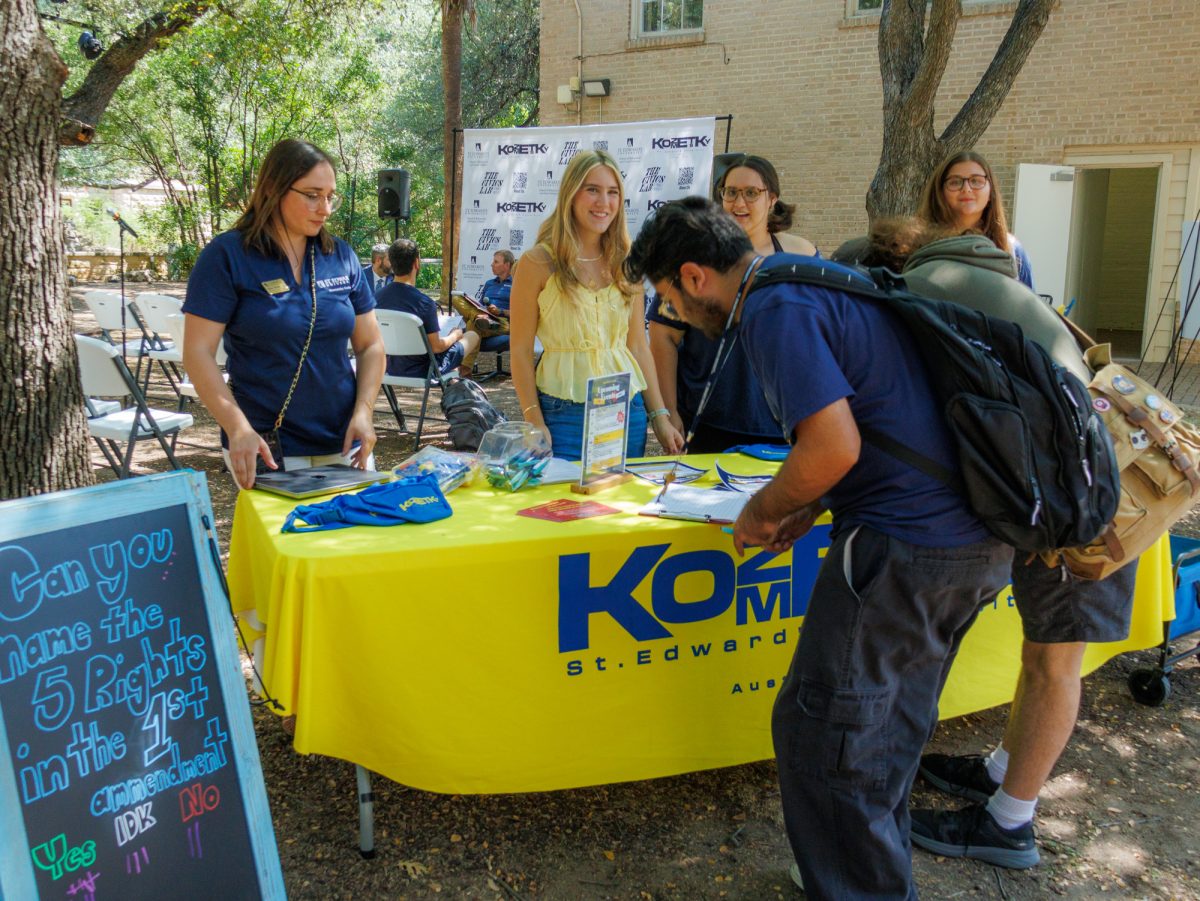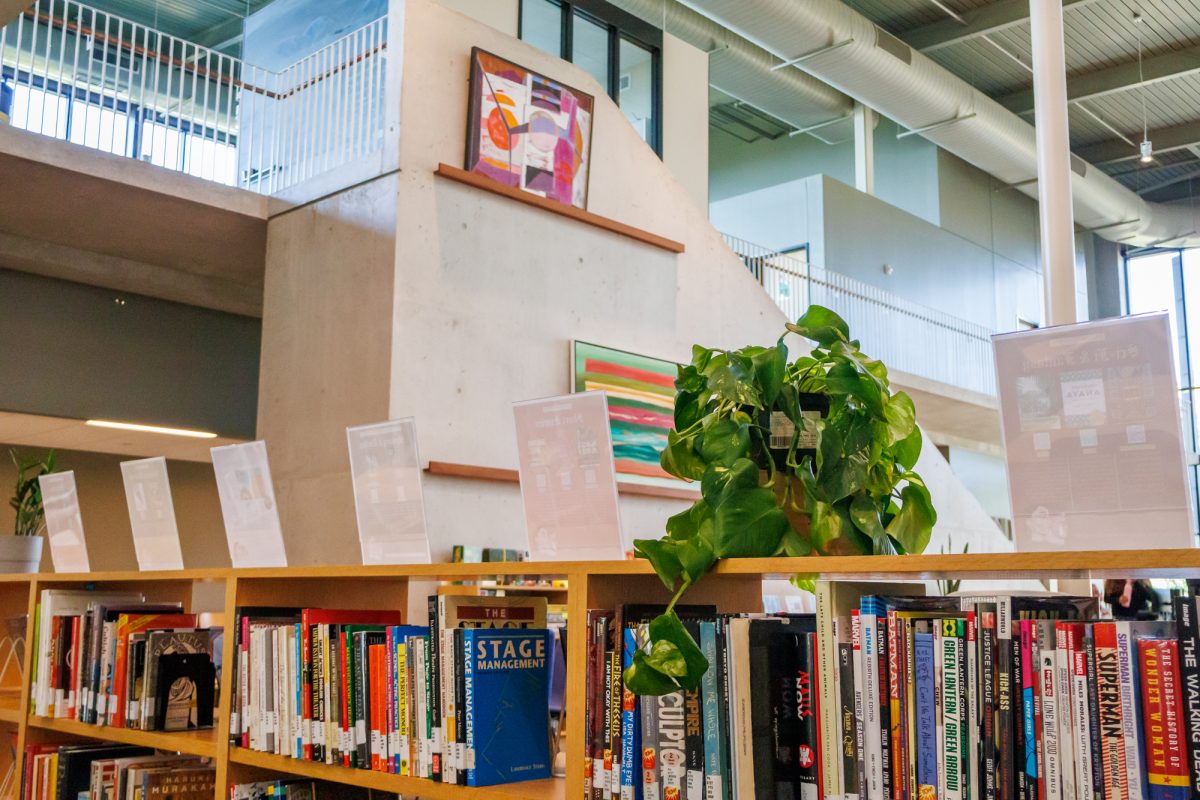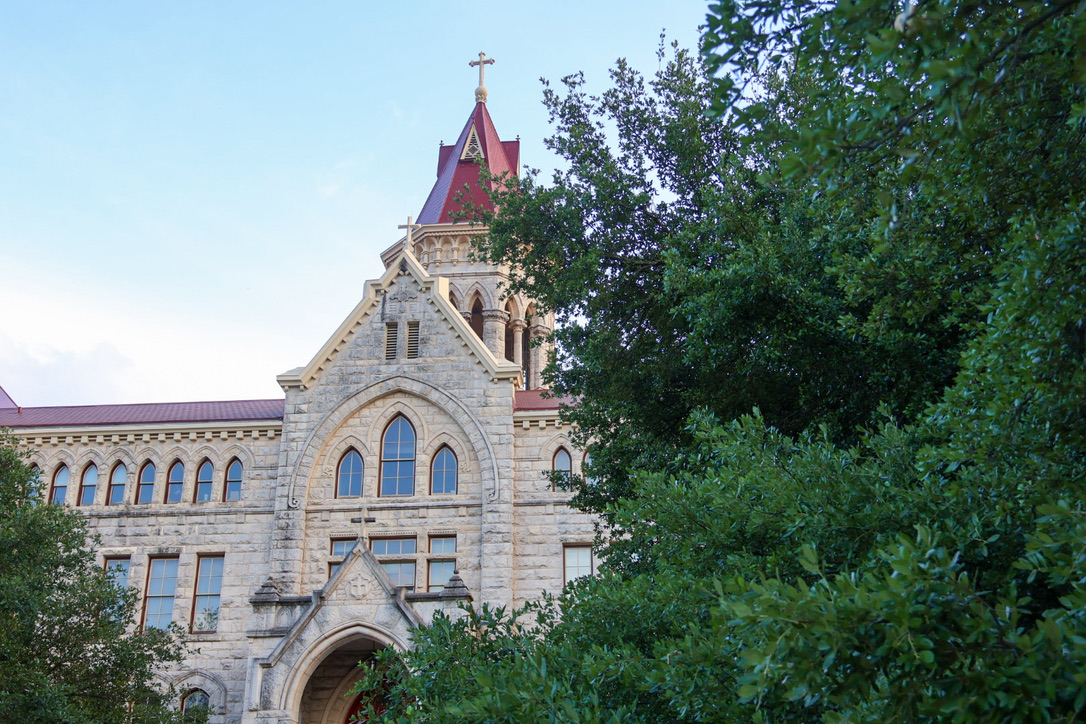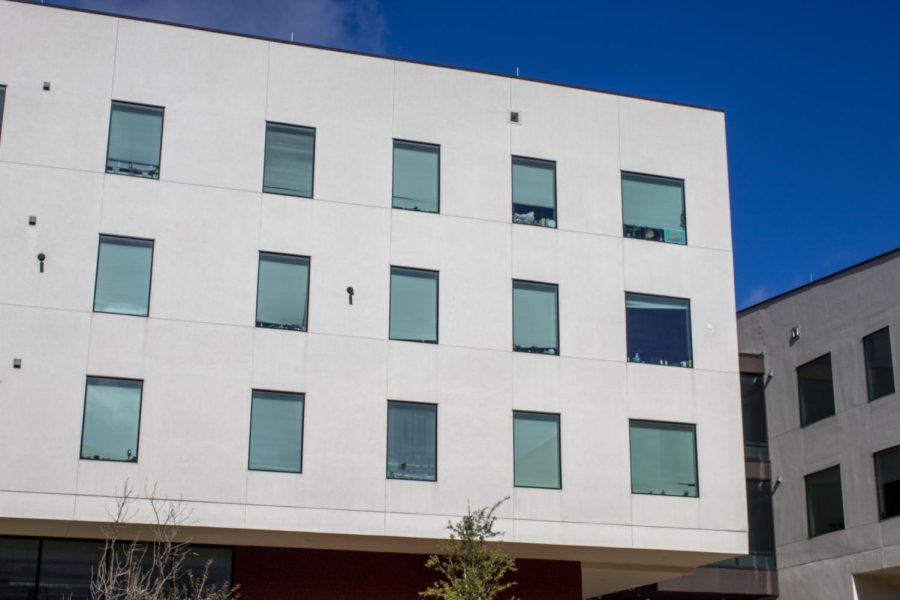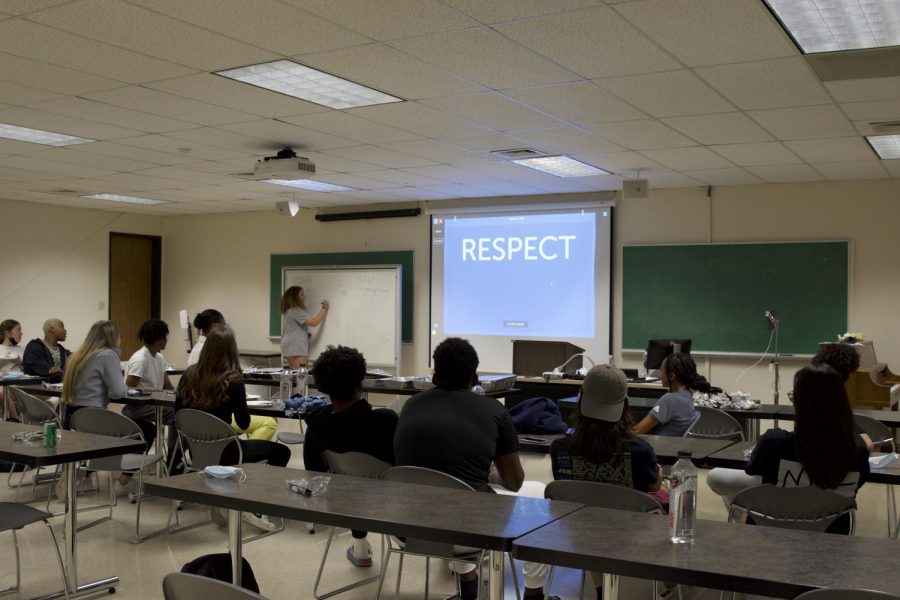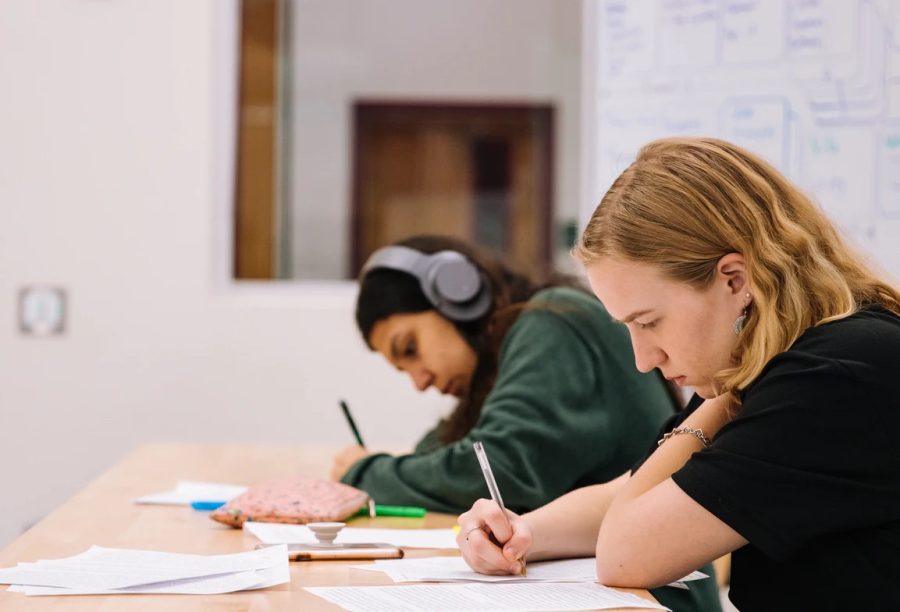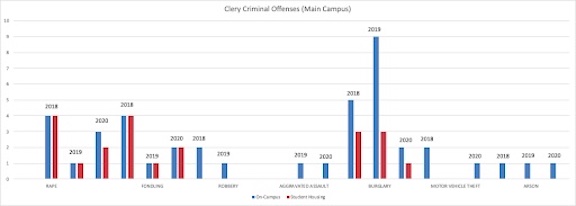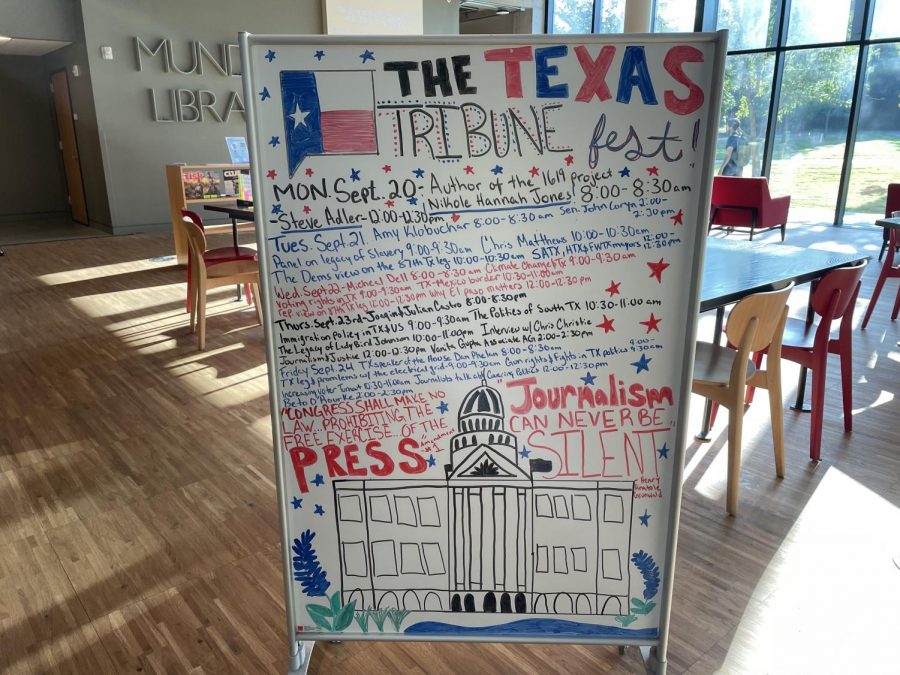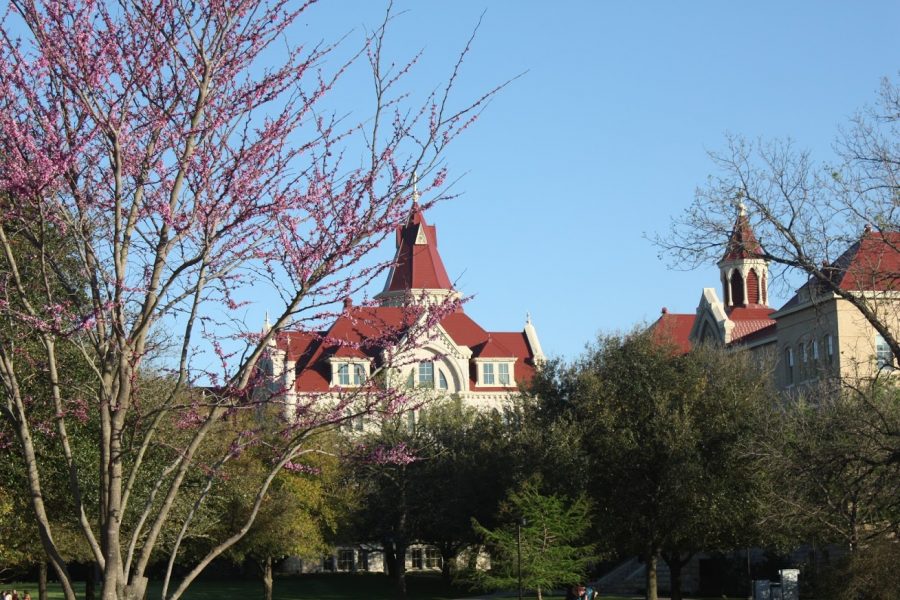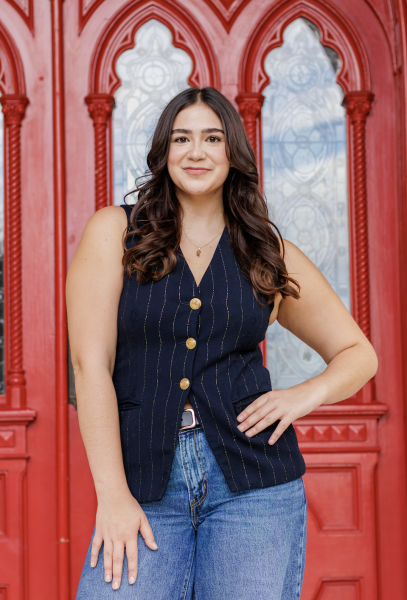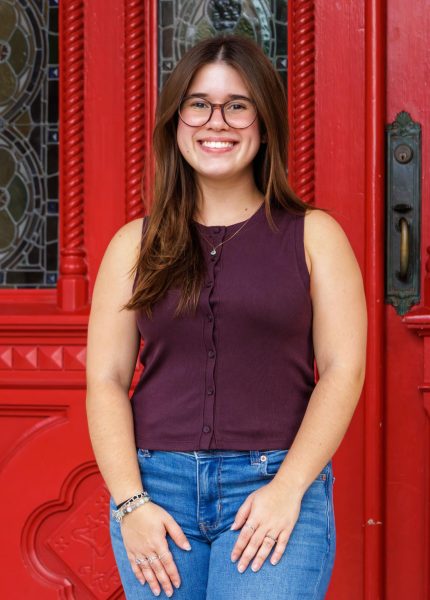Hilltop Views editors Anna Pratts and Nicole Williams-Quezada sat down with St. Edward’s University President Montserrat Fuentes for a wide-ranging discussion about recent national rankings, shared governance, the university’s commitment to international and underrepresented students and challenges posed by federal funding cuts. What follows is a Q&A from that discussion, edited for clarity.
Rankings and institutional recognition
Williams: St. Edward’s was ranked number five best university and number two in undergraduate teaching. Can you talk a little bit about what this ranking means to you?
Fuentes: The ranking is more than just numbers. It’s a testament of the commitment that we all have to elevate the institution, the dedication to academic excellence with a personal touch to make sure that we ensure the success of our students. We are very excited to see the recognition of the institution, in alignment with the vision, to continue to elevate our reputation and to become that university of choice, a destination university. So being able to rank number five overall for our commitment to student success and number two for undergraduate teaching is something to celebrate for all of us as a community.
Williams: Is there anything you can discuss about the ranking received for veteran students?
Fuentes: Absolutely. We ranked number three for best value institution, which is important for us to recognize the effort to access an opportunity for all students. And we were ranked number four for best institutions supporting veterans, the commitment that we have to serve those who have served our country. So we are very proud of that dedication that we have. And it’s also a fulfillment of that mission to serve all and to make sure that we offer that education, that open source of opportunities for all.
Presidential journey and strategic vision
Pratts: You’ve been here for a little over four years. What initially drew you to come to St. Edward’s in 2021?
Fuentes: It was the mission of the institution, the real education that this institution has, to put the students at the center of everything that we do, our faculty, our staff, administrators, the board. It was clear that this is an institution that truly believes that education changes life, and that commitment to serve the underserved. That’s what it brought me here. I saw also the potential and the opportunities for St. Edward’s to continue to be elevated and reach that next level of excellence. I saw the potential by engaging more with the awesome community of Austin by helping the students to have access to opportunities, to put the knowledge into practice, the opportunity to continue to respond to the demands of our society. So I saw that this institution has limitless potential and a mission that would really facilitate the vision that we set in place as part of the strategic plan.
Williams: Can you describe your last four years on the hilltop in three words?
Fuentes: Family, resilience, community.
Strategic plan and academic excellence
Pratts: How does the ranking in undergraduate teaching reflect our advancement in academic excellence and distinction, which is the first goal of the strategic plan?
Fuentes: As part of the vision for the university, we set a plan to continue gaining distinction through academics and setting in place also programs that will prepare our students to be indispensable and marketable. Also, knowing how we are part of a very much interconnected society with very rapid advances in technology, making sure that we integrate that as part of the education for our students and ensuring that they are marketable too. So with all that in place, we started to develop, as part of the strategic excellence and distinction component of the strategic plan, the development of programs that will help our students to pursue opportunities that will lead to economic independence and a life of fulfillment. So, part of that was the establishment of the health sciences school. And as you know, we have already been very successful setting some of the programs in place to the point that nursing right now is the number one major in the context of demand this year.
And we’ll continue with several other programs, but it was also other areas, expanding areas that would highlight digital literacy for our students, AI, software development and data science, and making sure that would also highlight research. And very proud that the university now has obtained a designation of R2 Research University because that also brings opportunities for students to engage in scholarship to promote innovation and discovery, which was part of the strategic plan. Not only that, but making sure that all the students across all different disciplines would have experiential learning, internships or research, study abroad, those opportunities that will really help you to be truly indispensable when you graduate and leveraging Austin. The potential that we have being here as part of the city that is the hub of innovation is a very vibrant community that are also really proud of the institution. So all that was the core of the strategic plan, and it’s very good to see that as part of the rankings, a commitment to elevation networks. That was the core of everything that we have done over the last four years. A reflection, what we see right now is a reflection of all the work by all the members of our community, taking us to where we are and ensuring that we continue to help all of our students to thrive.
Defining and practicing shared governance
Williams: A few weeks ago, the board of trustees sent out an email regarding an update to shared governance to students, staff and faculty. I’m interested to know how you define shared governance, and what role do you feel like it should play in university decision making?
Fuentes: Shared governance is part of our mission. It’s the opportunity for all of us to contribute to the success of this institution, the success of our students. It’s about collaboration, listening to different perspectives and making better decisions by having more insight, input and different types of experiences that are being shared as part of that platform that brings us all together. I see as part of my role as president, to make sure that we hear all the different voices, that everybody feels that they are making a contribution. And we do that in a collaborative and respectful manner.
So we do think that shared governance is the foundation for us to be able to work together to ensure the success of our students and the institution. It’s not necessarily about everybody agreeing, but it is about ensuring that we work together with great accountability to ensure the best possible outcomes for the institution. And part of that accountability is explaining the narrative of how and why decisions are being made. As we continue to work together, we want to make sure everybody understands how to contribute to the success of the institution. So part of what will be working next on, bringing together policies that clarify the different roles that we all play in ensuring that we are always focusing on, what is the best interest of our students in the institution.
Williams: Can you describe how shared governance works in practice here at St. Edward’s?
Fuentes: We have a board of governors that ultimately will be responsible for decision making at this institution. And as president, I serve as CEO, so I’ll be responsible for all the day to day decisions and the operation of this institution. It’s important that for me, in advancing the institution, I hear the voices of the different members of our community. So we have a body that represents the students, the Student Government Association. We also have an entity that represents the voice of the faculty, the Faculty Senate. And then similarly for the staff, we have the Staff Council in the context of policies of our different roles and responsibilities as an institution. We have the bylaws that will clarify the role of the board, the role of the president and CEO. And then we also have a faculty manual that will have policies that would also explain what the role of the faculty is in the context of the development of the curriculum and other academic affairs matters.
Pratts: Looking at the current political climate in Texas regarding faculty senates and shared governance in public institutions, what do you think is the importance of still having those things in place at St. Edward’s and protecting those things on our campus?
Fuentes: As you know, with public institutions, we are moving away from that type of framework. And I think for us, it’s incredibly important that we continue to focus on hearing the different voices. I do believe you make better decisions when you have that opportunity to even disagree, and to hear different perspectives. And you also have the accountability of explaining the narrative of how and why we are making certain decisions. So I do believe that it’s not just part of our mission, but we make better decisions when we have a strong shared governance foundation. And it also helps to build community, again, defines who we are as an institution. So I’m proud of our commitment to shared governance and very much committed to make sure that we continue building it out.
Reflecting on the vote of no confidence in 2024
Williams: I know that this topic may be a little bit difficult to discuss, but if you wouldn’t mind, could you take a moment to reflect on the faculty senate vote of no confidence in 2024, and elaborate on what you learned from this experience?
Fuentes: The value of communication and the need to come together to work on enhancing and elevating the institution, the importance of being present in different places and bringing people together. This is an institution with incredible faculty, staff and students who are dedicated to the success of our students. But it’s important to continue engaging in very active communications. I would say the value of communication, and also the passion of this community, right? The fact that we are together, building community and advancing the institution also shows that we are all interested in what is best for the institution trying to work together.
Presidential Advisory Council
Williams: I did want to talk a little bit about the Presidential Advisory Council. What do you and other admin leaders hope that this council will accomplish?
Fuentes: I’m forming a Presidential Advisory Council to have the opportunity to hear, again, the voice of the faculty, staff, and the students in alignment with that commitment to promote active listening and bringing different perspectives to the table. My goal is that this council provides a platform for that, for listening, for engagement, also to understand areas of concern and how to work together to be able to address challenges, but continue also to focus and leveraging the opportunities that we have as an institution.
Williams: Will there be opportunities for anyone in the student body to participate on this council, or is it a closed selective committee?
Fuentes: I’m not choosing any of the members of that council. I have assigned two co-chairs, Dr. Alex Barron and Carey Mays, and they are working with the different shared governance groups to bring diverse voices to these groups. So most certainly, the goal is to be able to reach the entire community in a very effective manner. So yes, most certainly there are opportunities for everybody to engage. At the end of the day, there will be a relatively small group to be able to engage effectively. But more certainly when I hear the voices of other members of our community.
International students and Holy Cross mission
Pratts: Our campus is known to be very diverse. I believe that the international student population has reached around 10% this year. How do you feel like St. Edward’s supports and uplifts the community of international students, especially in times of so much uncertainty?
Fuentes: We are proud to see the growth of our international community here on campus. And I do believe that they provide great richness to the learning of all of you, of all our students, the contributions that they provide to this institution. They help all of us to bring empathy, to bring understanding, to gain readiness for the very much interconnected world that we are all part of. So they play a very important role and we are very much committed to making sure that they feel this is a community where they belong. And we all play a role to make sure that St. Edward’s continues to be a great home for all the members of our international community.
Pratts: How do you feel like having such a large portion of our student body being international correlates to our Holy Cross mission?
Fuentes: It’s very much part of our mission to offer an education for all, to ensure that we are committed to protect the dignity of every person that we celebrate. Again, different perspectives, different nationalities, different backgrounds. It’s part of our mission not only to bring them here, but to make sure that they feel that they’re an important part of this community. So it is part of our mission that education that we have had, and we certainly continue to have, the success of our international students.
Williams: Is there any insight you can provide about how St. Ed’s can or will continue to support international student admissions as federal policies change?
Fuentes: We’ll continue to navigate through the changes at the federal, at the state level with regard to how this institution continues to be relevant. So we’ll continue our efforts to engage internationally. I myself will be traveling internationally during spring to recruit students. So we continue that commitment, always under the umbrella of the law. So we are always working to make sure with the students that they are able to get their visas and to make St. Edward’s their home. So the commitment is there and will always be operating under the law.
CAMP and McNair programs face federal funding challenges
Williams: How do programs like CAMP and McNair align with our Holy Cross mission in ways other than just potentially serving underrepresented students?
Fuentes: As part of our mission, similarly to the international students, to focus on accessibility and accountability to ensure the success of our students. CAMP and McNair, they both have been important programs for this institution to open the doors of education to all the students. McNair, they focus primarily in preparing the students for graduate school, for research, for success. We are very proud that we continue with our McNair program during this fiscal year.
The CAMP program is no longer in place under the current administration, but the commitment that we have to students from migrant farm working families is in place.
Williams: What exactly does that mean? Does that mean that we no longer have any federal funding for CAMP this year?
Fuentes: That’s correct. CAMP, the College Assistance Migrant Program is a federal program, and this year the funding for CAMP has been eliminated. So we no longer have a CAMP program right now, but we have the commitment to the students that come from those types of backgrounds, from migrant farm working families, and that will continue as we move forward into the future.
Williams: So does this mean that we will continue to recruit students for a kind of CAMP program in the future, or does this mean that the funding will continue for those students that are here right now?
Fuentes: From the federal program, we don’t have any funding now. What will continue is the commitment to students from that type of background with fundraising and other actions. But at this point, we couldn’t say we have a CAMP program. We have a commitment to children of migrant farm working families, and St. Edward’s would always be their home.
Pratts: We got funding for McNair for this upcoming fiscal year. What was the process of maintaining funding for the McNair program and what does the future beyond this year look like?
Fuentes: There is uncertainty. We certainly don’t know what the future holds. And McNair is a very different program and we were in a different situation. So it’s important to point that out. McNair is a program that falls under what is called TRIO in the Department of Education. And funding for TRIO has been cut significantly. We already had the McNair program in place. We got the grant in 2022. So we were given the permission to move forward through this next fiscal year. At this point, what will come after that is unclear, but we’ll continue regardless, committed to the focus of McNair, which is the opportunity to introduce students from more underserved communities to research and opening the doors to graduate school. And we’ll continue to do that.
(TRIO programs are federal outreach and student services programs designed to identify and provide services for individuals from disadvantaged backgrounds.)
Pratts: How does that continuing commitment look like in terms of communication with donors, alumni and the broader community in terms of possibly maintaining some sort of funding, not through federal funding, but through outside sources?
Fuentes: That’s a very good question. We have been very successful bringing funding to support, something that is an important component of our vision for the institution, which is the commitment to research, the commitment to serve students who come from more underserved communities. And the reality is that we closed last fiscal year with more than twice the amount of funding that we have received before to support students, to support the institution. And we are already on a very good trajectory. So we are elevating our efforts to enhance the support that we are bringing from different sources, from foundations, from donors, from friends of the community. And finally, we’ll continue to pursue funding from the state and also from the federal government.
Williams: As for current CAMP students, if this change in no longer being the federal CAMP program, if there are going to be any fundamental changes to the program that they will see or that they can expect, or how might these students be affected by the change?
Fuentes: Well, the commitment to support the students that are here absolutely is in place. So we want to continue offering the support for the students. And whatever commitments have been made will be honored for those students. I cannot tell you, I couldn’t tell you either how we are going to be able to raise all the funding, but we are committed to honor all the commitments that have been made today.
Looking forward
Pratts: Is there anything else you would like to add that we maybe haven’t touched on?
Fuentes: I do want to highlight how as an institution we continue to advance and invite everybody to come together. In particular during these times where we are seeing a lot of changes in our society, building community is part of who we are as an institution. And we all play a role in coming together to navigate through the challenges and the opportunities that we have ahead.
And I think you, as students, do play an important role in bringing people together. And when you were asking me an important word to define St. Edward’s: Family, community, and resilience as we navigate together through the high level of uncertainty that we have in higher education and even at this institution.

